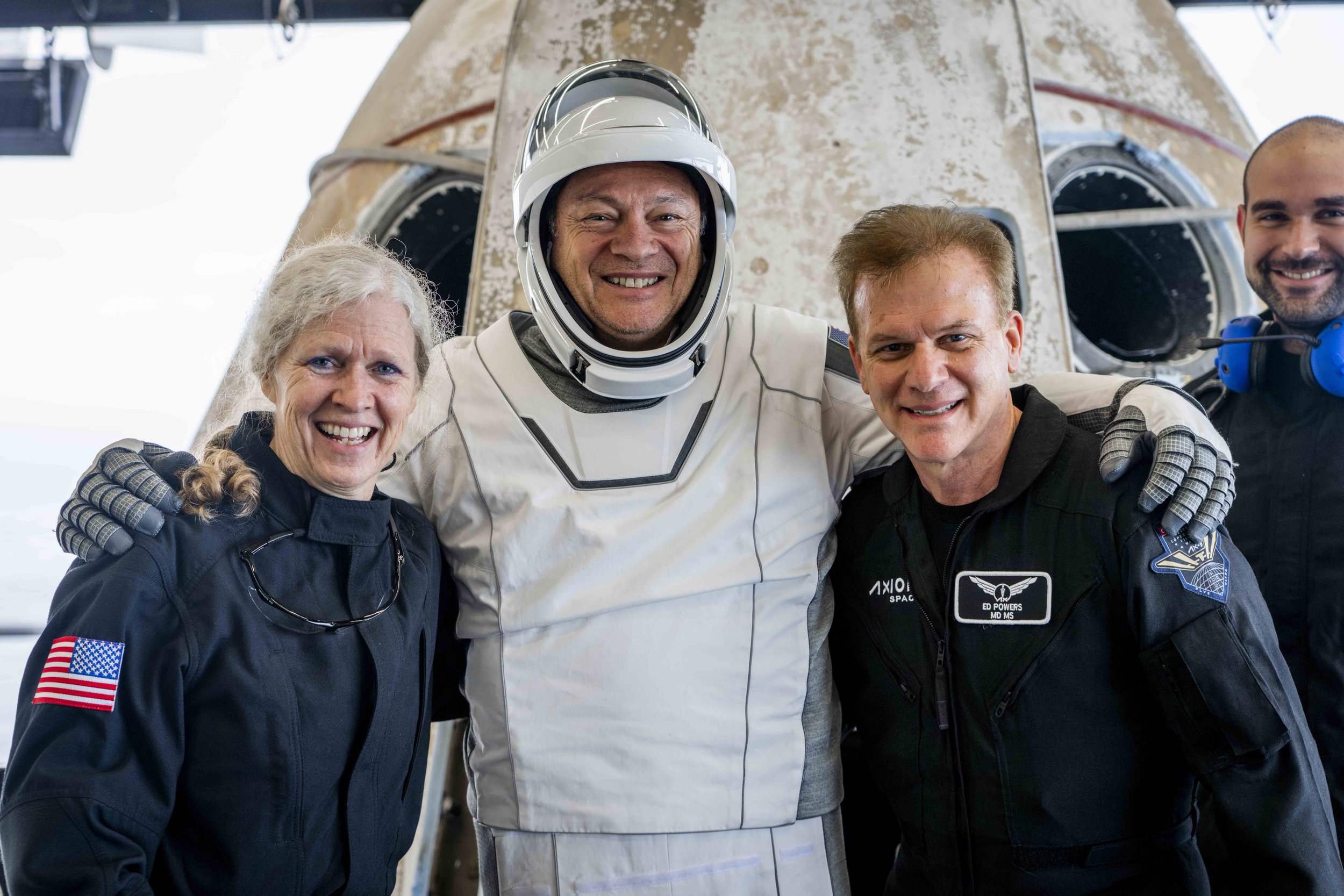Axiom Space and Prada unveils the AxEMU flight design during IAC 2024.
At this year’s International Astronautical Congress (IAC) in Milan, Italy, Axiom Space demonstrated its commitment to expanding access to space by securing agreements with countries looking to further their nation’s space exploration objectives. And in an exciting collaboration, Axiom Space and Prada revealed the flight design of the Axiom Extravehicular Mobility Unit (AxEMU) spacesuit to be worn by the first woman to walk on the Moon as part of NASA’s Artemis III mission.
Partnerships
Axiom Space signed a memorandum of understanding (MOU) with the Polish Space Agency (POLSA),
enhancing Poland’s pivotal role in Axiom Mission 4 (Ax-4). This agreeement sets the stage for long-term collaboration in technology development, microgravity research, and public engagement.
Axiom Space signs a MOU with POLSA during IAC.
Axiom Space is also exploring future collaborations with 4iG Space & Defence Technologies, a Hungarian company focused on digitalization and telecommunications, which is aiming to bolster and secure important roles within the space industry. Focusing on microgravity research and innovation in low-Earth orbit, this partnership seeks to inspire the next generation of scientists and engineers.
Axiom Space signs a MOU with Hungarian company 4iG Space & Defence Technologies.
Additionally, Axiom Space’s first-ever collaboration with the Mexican Space Agency (AEM) underscores Mexico’s commitment to advancing cutting-edge technologies that improve life on Earth. From space science to telecommunications and microgravity research, this agreement looks to actively shape a brighter future both on our planet and beyond.
Axiom Space’s secures first-ever collaboration with the Mexican Space Agency.
Spacesuit
Axiom Space’s culminating event at IAC, was when the space company and luxury fashion house, Prada, unveiled the flight design of the AxEMU, developed for NASA’s Artemis III mission. About a year ago, the two industry giants announced their collaboration on the outer-layer design and spacesuit materials work.
The single AxEMU architecture is evolvable, scalable and adaptable for missions on the lunar surface and in low-Earth orbit. The AxEMU has significant advancements in safety, mobility, sizing, and performance.
Prada’s design and product development team worked closely with Axiom Space engineers, recommending customized materials and features that both protect astronauts from the unique challenges of the lunar environment and visually inspire future space exploration. Image courtesy of Prada / Axiom Space.
Courtesy of Prada, Axiom Space
Axiom Space’s partnership with Prada has established a new model for cross-industry collaboration, pushing the boundaries of what’s possible in commercial space exploration with non-traditional partners.
The Galleria Vittorio Emanuele II, Italy’s oldest active shopping gallery and a major landmark in Milan, hosted an exhibit with a replica of the AxEMU spacesuit during IAC. Named after Victor Emmanuel II, the first king of the Kingdom of Italy, this four-story double arcade in the heart of Milan featured the exhibition spacesuit. Positioned at the center of the Galleria, the AxEMU suit became a striking focal point in this historic venue. The exhibit drew visitors from around the globe, eager to see a replica of the next-generation spacesuit that will enable astronauts to explore the lunar south pole for the very first time. The presence of the AxEMU spacesuit not only highlighted the fusion of history and innovation but also underscored humanity’s ambitious pursuit of space exploration.
The AxEMU spacesuit is on display with an installation at the Galleria Vittorio Emanuele II in Milan as an extension of the IAC 2024 event in the heart of the city.
These efforts are pivotal in transforming space from an exclusive domain to a thriving home that benefits every human, everywhere. Partnerships amplify the pace of innovation, broaden the scope of exploration, and open new avenues to grow a global space economy. Axiom Space is proud to be part of laying the foundation for this future, making space accessible and beneficial for all of humanity.
















































